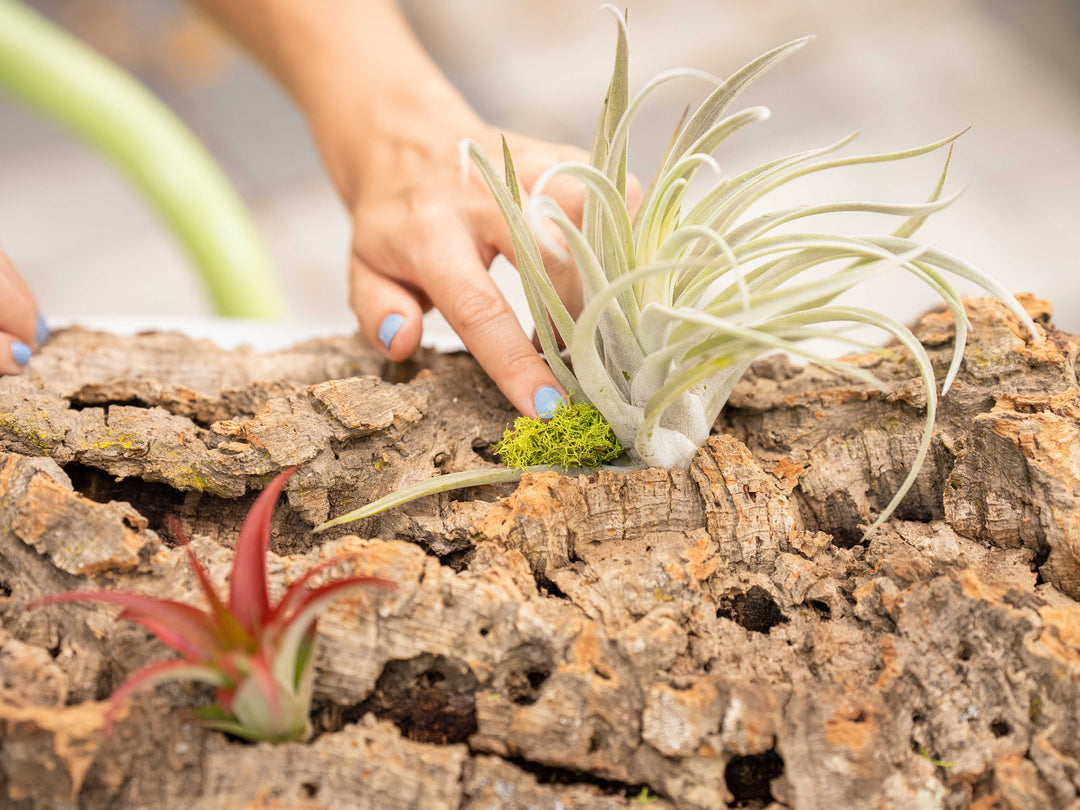
Cork Bark: Vertical Garden Displays for Your Air Plants

Assembly and Gluing Instructions
-

Look for natural nooks or crevices where your plants can be inserted without any glue. This will allow for rearrangement of plants as well as making it easier to water them.
-
If any plants need to be attached with glue, find areas where the bases can be nestled into the cork bark. For larger plants, such as Xerographica, a wire may be wrapped around the plant and cork bark for additional support.
-
Apply glue to the base of the plant and firmly hold the plant in place on the cork bark for 10-15 minutes. We recommend E-6000 glue as it is waterproof and safe for plants. Allow the plants to dry horizontally on the cork bark for several hours before hanging up the display.
-
Water the attached plants weekly by giving them a heavy misting. Since the cork bark is tolerant of moisture, you can also soak the plants by floating the cork bark plant side down in a basin of water.
-
The air plants will slowly grow roots over time which will naturally attach to the cork bark to hold the plants in place as they do in the wild!
Mounting Large Plants with Wire
-

We recommend using 22-gauge floral wire to attach Xerographica or any larger plants that can not be supported properly with glue. Never use copper wire as it is harmful to the plants.
-
Run the wire around the base of the plant and under the surrounding leaves. Be careful not to pierce or damage the plant with the wire.
-
Make sure the ends of the wire are at the back of the cork bark and twist or knot them together to adhere the wire.
-
Your plant will now be supported and able to hang vertically. If it feels loose along the cork bark, tighten the wire or add an additional strand for support.
-
To water, give the plants a weekly heavy misting. If the plant can easily be removed from the wire, you can detach it for soaking.








